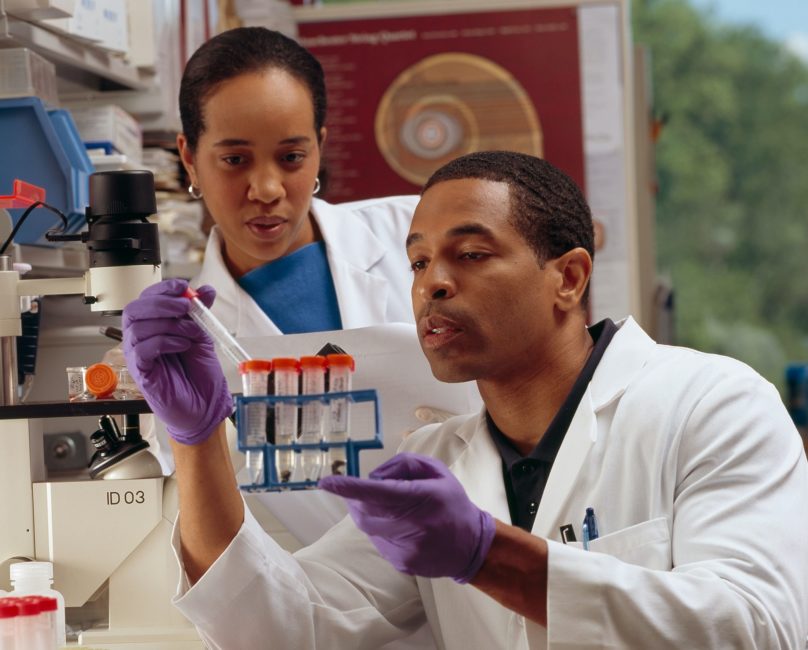Table of Contents
Phases of Clinical Trials are the steps which are followed to test the drug in the different number of healthy volunteers/patients.
Clinical trials are experiments or observations done in clinical research. There are five Phases of Clinical Trial including Phase 0.
According to WHO a clinical trial is any research study that prospectively assigns human participants or groups of humans to one or more health-related interventions to evaluate the effects on health outcomes.
Phases of the clinical trial are as follows:
| Phase of Clinical Trial | Aim of the Phase | Study included |
| Phase 0 | Pharmacodynamics and pharmacokinetics in humans | Phase 0 trials are optional first-in-human trials. Single sub-therapeutic doses of the study drug or treatment are given to a small number of subjects (typically 10 to 15) together preliminary data on the agent’s pharmacodynamics and pharmacokinetics. |
| Phase I | Screening for safety, MTD (Maximum tolerated dose) | First-in-Human trials. Testing within a small group of people (typically 20–80) to evaluate safety, determine safe dosage ranges. |
| Phase IA | Single ascending dose | Small groups of subjects are given a single dose of the drug while they are observed and tested for a period of time to confirm safety. A small number of participants, usually three, are entered sequentially at a particular dose. This particular design assumes that the maximally tolerated dose occurs when approximately one-third of the participants experience unacceptable toxicity. |
| Phase IB | Multiple ascending dose | Investigating pharmacokinetics and pharmacodynamics of multiple doses of the drug, looking at safety and tolerability. A group of patients receives multiple low doses of the drug, while samples (of blood and other fluids) are collected at various time points and analyzed to acquire information on how the drug is processed within the body. |
| Phase II | Establishing the preliminary efficacy of a drug usually against a placebo. | Testing with a large group of people (typically 100-300) to determine efficacy and to further evaluate its safety. |
| Phase IIA | Exploratory (non-pivotal) study that has clinical efficacy, Pharmacodynamics or biological activity | Proof of concept, efficacy, Dose range exploration , Pilot studies |
| Phase IIB | Definite Dose finding studies. | Pilot studies designed to demonstrate clinical efficacy or biological activity (‘proof of concept’ studies) Exceptionally, Phase II studies can be used as pivotal trials, if the drug is intended to treat life-threatening or severely debilitating illnesses. |
| Phase III | Final confirmation of safety and effectiveness | Testing with large groups of people (typically 1,000–3,000) to confirm its efficacy, evaluate its effectiveness, monitor side effects, compare it to commonly used treatments, and collect information that will allow it to be used safely |
| Phase IIIA | Pivotal studies clinical trials generate additional data on both safety and efficacy in relatively large numbers of patients in both controlled and uncontrolled trials | Trials conducted after +efficacy of the medicine is demonstrated, but prior to regulatory submission of a New Drug Application (NDA) or another dossier. These clinical trials are conducted in patient populations for which the medicine is eventually intended |
| Phase IIIB | A study started prior to approval. These trials may supplement earlier trials, complete earlier trials, or maybe directed toward new types of trials (e.g., quality of life, marketing) or Phase IV evaluations. | Studies intended to support publication claims or to prepare launch, which starts before approval but is not intended for Regulatory submissions |
| Phase IV | Different formulations, dosages, duration of treatment, medicine interactions, and other medicine comparisons may be evaluated. | Safety studies during sales Post-marketing studies related risks, benefits, and optimal use. As such, they are ongoing during the drug’s lifetime of active medical use. |


